Margaret Fleming: How do you solve a murder without a body?
 Crown Office
Crown Office"Something is not adding up here. We can't find anyone who has seen her apart from her two carers."
Det Insp David Wagstaff was briefing a senior officer from Police Scotland's Major Investigation Team about a high-risk missing person.
It was 31 October, 2016 and less than 72 hours had passed since a massive search was launched for Margaret Fleming.
The 35-year-old had apparently vanished from the crumbling cottage she shared with Edward Cairney and Avril Jones.
Despite this the couple did not appear concerned, even though the young woman had learning difficulties.
The senior investigating officer Det Supt Paul Livingstone was also told they had been evasive under questioning.
It was a complex picture but, as police trawled back through Margaret's life, independent enquiries established an extraordinary and chilling fact.
Det Supt Livingstone said: "Everybody we spoke to had not seen her since 1999."
The investigation that followed unearthed a story of neglect, exploitation, fraud and murder.
It also posed the ultimate test for detectives and prosecutors: how do you secure a conviction without a body?
The scale of the task facing police was highlighted when Cairney and Jones could not help them obtain a forensic profile of Margaret.
The random items they handed over - a tartan jumper, blue T-shirt, socks and a toy penguin - contained no trace of the former college student.
If it wasn't for a routine blood sample taken shortly after she was born on 1 November, 1980, then officers would have been unable to get any of her DNA. These samples are not always retained by the NHS but, fortunately, Margaret's was.
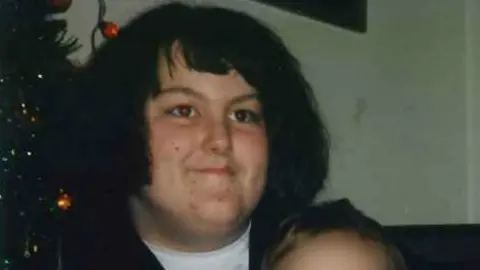 Crown Office
Crown OfficeThe DNA profile was compared against a number of unidentified bodies and body parts across the UK but there was no match.
Although police had no direct evidence Margaret had come to harm, the conflicting testimonies of Cairney and Jones did nothing to ease their suspicions.
Det Supt Livingstone said: "I think the thing that was really sticking out was that these were people that were meant to be caring for this vulnerable young woman and they didn't know where she was.
"Anyone in their right mind would not allow someone with those vulnerabilities to just come and go as they pleased."
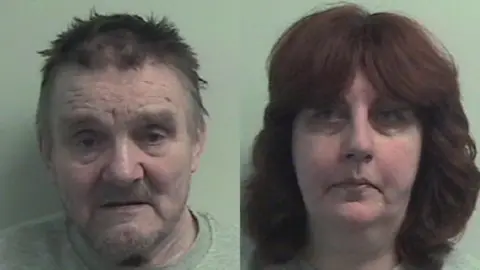 Police Scotland
Police ScotlandOfficers painstakingly began to record every known detail about Margaret's life in electronic calendars.
The first entry was her date of birth and the last was 28 October, 2016 - the day it finally emerged she was missing.
From her childhood in Port Glasgow to her fateful move nine miles along the coast to Inverkip the inquiry team noted every health and social work appointment.
Major milestones such as her parents' divorce in 1993 and the death of her father in 1995 were also chronicled, as well as a detailed log of her school and college education.
The last sighting on the timeline was 17 December, 1999.
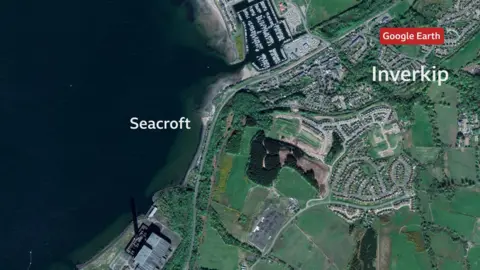
On that date Avril's brother, Richard Jones, vividly remembered 19-year-old Margaret playing with his two young children as he moved into his new home in Inverkip.
But the following week, when the family met up for Christmas dinner, there was no sign of her.
The only explanation later offered by Jones to her own mother was that the teenager had "run off with a traveller" on 5 January of the following year.
From then on, Cairney and Jones seemed to seclude themselves from the outside world, with their Seacroft home starting to fail into disrepair.
Meanwhile, Margaret's benefits continued to be paid, unchallenged, into Jones' account.
 Crown Office
Crown OfficeThe timeline gathered by the police also included intelligence from eyewitnesses including the teenager's mother, Margaret Cruickshanks, who was attacked by Cairney in November 1997.
These accounts detailed Margaret's slave-like existence at Seacroft and the drastic measures she was subjected to as punishment.
Avril's brother recalled arriving at the cottage in April 1999, the day after his parents' ruby wedding anniversary.
Margaret was locked in her bedroom, had tubes on her arm and was said to have been making a chilling wailing sound while dragging her fingers down the window.
The family decided not to go in to the house and drove away.
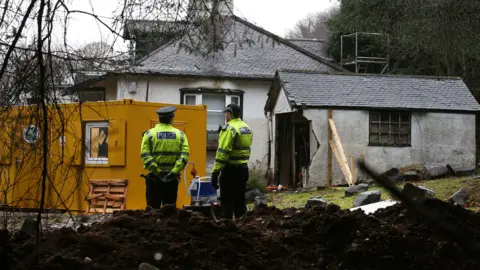 PA
PAWhen officers first entered Seacroft on the evening of 28 October, 2016 they had to clear a path through junk just to get up the stairs. Cairney and Jones were hoarders who did not throw anything out.
Four days later they returned to begin a detailed search which proved to be a mammoth challenge, not least because the house had not been washed, mopped or dusted in a very long time.
Hair from the couple's two dogs lay everywhere, and officers even found dog faeces inside the house.
The team decided to start in the hallway and then emptied one room at a time.
 Crown Office
Crown OfficeIn a move believed to be a first for Police Scotland, a mobile laboratory was set up in the garden so that items could be processed and prioritised.
Officers did not want to miss any evidence that would have shed light on the miserable ordeal suffered by Margaret.
Once each room was emptied it was examined from floor to ceiling with luminol, which highlights blood invisible to the naked eye, for any signs that an attack had taken place.
Det Supt Livingstone said "It was so detailed they recovered two scabs from a bedroom. We examined them for DNA and it came back that they were both Avril's."
Margaret's attic room was found to have no bed or carpet and the walls had been knocked down into the eaves.
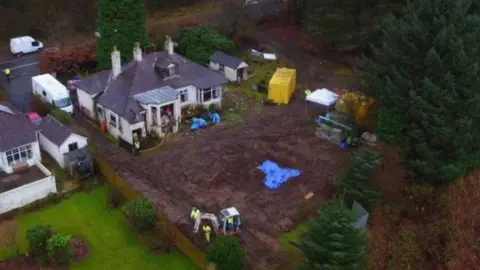
The downstairs rooms were equally cluttered and chaotic, but everything the officers found suggested that only two people were living in the house.
There were only two chairs, for example, both of which were facing the TV.
Cairney and Jones slept in separate bedrooms, which were also stacked with boxes from ceiling to floor.
 Crown Office
Crown OfficeOf the thousands of pictures seized from the house, fewer than 10 featured Margaret - and there was none of her on her own.
In the last known photograph taken in March 1999, she appears between Avril's parents, Florence and Walter Jones, wearing what some officers believed was a wig.
Jones' detailed diaries and wall calendars proved illuminating as the last reference to Margaret was in January 2000.
The search operation, including a full excavation of the garden, took six months but also found no trace of Margaret.

Murders without a body

- Allison McGarrigle - vanished in June 1997 and was formally declared dead eight years later. Paedophiles Charles O'Neill and William Lauchlan were later jailed for her murder.
- Arlene Fraser - disappeared from the family home in Smith Street, Elgin, Moray, on 28 April, 1998. Her husband Nat was found guilty of her murder after a second trial in 2012
- Suzanne Pilley - The Edinburgh book keeper went missing in May 2010. Her lover David Gilroy was later convicted of her murder and burying her in a remote part of Argyll.
- Lynda Spence - The businesswoman disappeared in April 2011 Colin Coats and Philip Wade were found guilty of abducting, torturing and murdering the 27-year-old.
Murder cases where there is no body are still extremely rare in Scottish courts, but prosecutors say technology has increased the likelihood of them being brought before a jury.
Kenny Donnelly, a procurator fiscal at the High Court, said: "In today's society, it is very difficult to go completely unnoticed and undetected. There are digital footprints and this information can be gathered quickly and with greater reach than ever before.
"This growing expertise, together with developments in case law, forensic examination and investigative tools has led to the Crown challenging the boundaries of the circumstantial case and considering proceedings in matters which may once have been considered lacking in sufficient evidence."

Proof of life
Officers took the rare step of launching a laborious proof-of-life investigation as they looked to build a case that would prove Cairney and Jones had murdered Margaret.
They contacted every police force, health board, doctor's surgery and local authority in the UK in an attempt to find any evidence that she might still be alive, with Det Supt Livingstone drawing on his experience from the Lynda Spence case in 2011.
Banks and financial institutions were also contacted to establish if Margaret had applied for credit.
 Getty Images
Getty ImagesInvestigators had to travel across the UK to visit the addresses of the almost 50 possible matches that the search threw up - but after an exhaustive 13-month trawl every conceivable check had returned a negative result.
Experts also found no evidence of phone calls or texts between Margaret and her carers.
The police case was further strengthened by the surreal interviews Cairney and Jones gave to journalists including BBC Scotland's Suzanne Allan.
Det Supt Livingstone said: "When you add up all the circumstances it shows that she has came to some harm and that the only people who had that opportunity were her so-called carers."
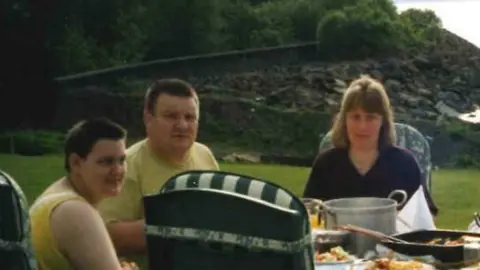 Crown Office
Crown OfficeOfficers also discovered a Christmas card book in which Jones marked down cards sent and received. There was a tick against Margaret's name in 1997, 1998 and, for the last time, in 1999.
Other pieces of the jigsaw reinforced the fact that the couple had repeatedly lied to cover up the £182,000 in benefits paid directly into Jones' account over a period of almost 17 years.
These included letters purportedly sent to the couple by Margaret that, according to her former teacher, were too sophisticated to be genuine.
CCTV also rubbished the couple's claims about meeting her in London shortly before they were arrested in October 2017.
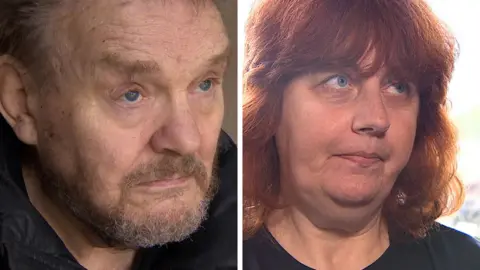
Det Supt Livingstone politely declined to share his thoughts about what might have happened to Margaret and her body.
He added: "Only they [Cairney and Jones] know. What I would say is that I have no doubt the two of them were involved in this and the subsequent cover up of it.
"It is something that I would love to know the answer to, and it is something that, if they never tell us, that I will think about for the rest of my life.
"To do what they have ultimately done and to just cover it up and get away with it for so long is beyond wickedness."
As Cairney and Jones each face at least 14 years in prison, the senior detective has a simple message for the carers turned killers.
He said: "Your lies and deceit have caught up with you so, for once, just think about Margaret. That wee girl deserves a proper funeral."
